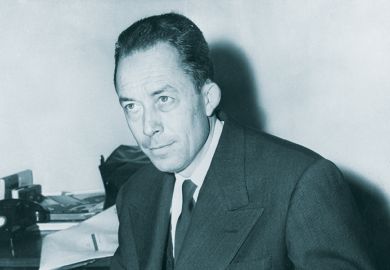Towards the end of the last century, a rural Bengali priest of the goddess Ka-lu- became an object of fascination for the anglicised gentry of Calcutta. In time his initial status as madman and ecstatic crystallised into that of a divine "incarnation". In a further posthumous transformation, the quietistic "saint" came to be seen as the founder of a "universalist" and socially active religious movement, a metamorphosis linked to the reformist and proselytising zeal of his chief disciple, Swami Vivekananda, and the order established by him. The priest came to be known as Ramakrishna Paramahamsa, and the religious movement, arguably the most prestigious in modern India, the Ramakrishna Order (Math and Mission); today, through the advocacy of western disciples such as Christopher Isherwood and Aldous Huxley, Ramakrishna is known throughout the world.
Attempts to investigate this fascinating trajectory have at times met with resistance from an order intent on controlling the image of Ramakrishna. Scholarly resentment has focused on refusal of access to original documents, on bowdlerised English "translations" of Bengali sources, and even, in one mystifying case, on the refusal by a New York branch of the order to permit extensive citations from one such authorised translation, The Gospel of Sri Ramakrishna. But it is on the popular Bengali original of this work - usually referred to as the Katha-mr.ta - that the order's efforts to control the image of Ramakrishna have largely foundered. Based on an urban devotee's diary record of Ramakrishna's encounters in the last four years of his life (188286), the Katha-mr.ta and its vividly rustic Ramakrishna provide an insight into a meeting of contrasting worlds. As such it has prompted a series of inspired writings by historians. It has also stimulated work of a "psycho-biographical" kind, by Narasingha Sil, for example, and now by Jeffrey Kripal in the book under review, which purports to "reveal Ramakrishna's secret", that is, his "mystico-erotic experiences" using "two meaningful wholes", Hindu Tantra and psychoanalysis, as interpretative strategies.
Where textual competence is concerned, Kripal's familiarity with a variety of Bengali texts is impressive. However, as he anticipates, his system of transliteration is offputting ("Ka-lu-" and yet "Ramakrishna"). Of translation slips that matter to the argument, the following is typical. The author asserts that the faith of an associate of Ramakrishna had "homoerotic dimensions" on the grounds that he "liked to look at pictures of men, for they aroused in him feelings of 'tenderness' I and 'love'I". But the word translated here as "men" is manus., which means "human being" without gender specificity. In fact, despite his initial differentiation of the erotic (as the sexual plus the sacred) and the purely sexual, Kripal himself falls into a reductionist trap by sexualising his language in a way quite inappropriate to the material.
More serious than these lapses and tendentiousness is the sleight of hand by which strained or confessedly speculative arguments are subsequently transformed into a firm base for further such arguments. There is also a slippage between an entirely appropriate scepticism towards the sources, and an unthinking acceptance of them when it suits the argument. At times Kripal displays a welcome agnosticism about the status of the texts he uses, likening the Katha-mr.ta to a "play" and emphasising that he is drawing from them one possible "story". In the light of this it is surprising to find him attempting to reach not just the "real" Ramakrishna, but an even deeper Ramakrishna of which the saint himself was probably not aware. Admitting that "certainly many of my conclusions are speculative", Kripal maintains that "taken together I their combined weight adds up to a convincing argument I". On the whole, this reader was not convinced.
As an illustration of Kripal's method, his own starting point, Ramakrishna's foot, will do. While in mystical absorption, the saint would sometimes place his foot on the body or in the lap of others, an act disapproved of by his doctor but not his devotees. For no reason that I could discern, Kripal has taken "body" (ga- or an+ga) and "lap" (kol) to mean "genitals". The act therefore becomes one of homoeroticism, which naturally evoked an adverse reaction. There are many arguments against this interpretation. First, in an almost identical passage to one of these, the Katha-mr.ta specifies that the relevant part of the body is the chest (buk). Second, with the exception of divine feet (of a guru or "incarnation") which are a source of blessing, there is a prohibition against touching a person or revered object with the feet. The doctor saw Ramakrishna neither as a guru nor an "incarnation". Above all (and this objection applies to much of the exegesis of this book), it is highly unlikely that any act considered "homosexual" would have been defended by the disciples (homosexuality was rigorously repressed in Indian society of the time), let alone immortalised in print by a devotee.
Kripal argues convincingly, as have other scholars, that Ramakrishna's world was in some sense "Tantric". The author's concern to show that, in contrast to the later "official" version, Ramakrishna consistently rejected "Vedanta" gains credibility from his clarification that by "Vedanta" he means what Ramakrishna meant by that term. While a further argument, that the saint also rejected much of his Tantric background, is on the whole plausible, what is less so is Kripal's notion that this rejection came from his individual "homoerotic" tendencies. The effect of contextualising most of the discussion in terms of "Vedanta" and "Tantra" is to present many of Ramakrishna's traits as idiosyncratic or even aberrational by Bengali cultural standards. Had the contexualising backgrounds been the paths of knowledge (j$a-na) and devotion (bhakti), rather than "Vedanta" and "Tantra", the saint would have seemed less extraordinary.
In the context of devotional Bengali Vaishnavism, where femininity represents the highest attainable condition, the cultivation of femininity by men in various ways is not necessarily abnormal. Nor can it necessarily be taken as a sign of what we would call "homosexuality", that is, love between men. Many other traits that Kripal sees as indications of "homoerotic" tendencies are not uncommon in heterosexual Bengali men. Unlike our own society (at least in modern times), male celibacy, in the sense of conservation of vital seminal essence, is highly prized in rural Bengal. Male fear of women, the attempt to see all women as mothers rather than as sexual partners, and, in its extreme form, a cultivated sense of revulsion for the female body - all these stem precisely from the attractive power of women, rather than from "homoerotic" tendencies.
The sexual orientation of this complex figure could not have been expected to emerge from the sources available in the first place. But in any case, does it really matter?
Jeanne Openshaw is a research fellow, Lucy Cavendish College, Cambridge.
Kali's Child: The Mystical and The Erotic in The Life and Teaching of Ramakrishna
Author - Jeffrey J. Kripal
ISBN - 0 226 45375 8 and 45376 8
Publisher - University of Chicago Press
Price - £39.95 and £15.25
Pages - 386
Register to continue
Why register?
- Registration is free and only takes a moment
- Once registered, you can read 3 articles a month
- Sign up for our newsletter
Subscribe
Or subscribe for unlimited access to:
- Unlimited access to news, views, insights & reviews
- Digital editions
- Digital access to THE’s university and college rankings analysis
Already registered or a current subscriber? Login



